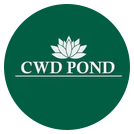
Crystal Clear: Your Guide to Perfect Pond Water Quality
Share
Introduction
Having a pond isn't just about creating a beautiful water feature – it's about maintaining a thriving ecosystem. At CWD Pond, we've helped countless pond owners transform their murky waters into crystal-clear havens. Whether you're a new pond owner or a seasoned enthusiast, this comprehensive guide will help you understand and maintain optimal water quality in your pond.
Understanding Your Pond's Ecosystem
The Science Behind Healthy Pond Water
Your pond is more than just water – it's a complex ecosystem where various elements work together:
-
Chemical Balance
- pH levels (6.8-7.8 is ideal)
- Ammonia levels (should be 0 ppm)
- Nitrite levels (should be 0 ppm)
- Nitrate levels (below 50 ppm)
-
Biological Elements
- Beneficial bacteria (filter media is designed to colonise this)
- Aquatic plants
- Fish waste management
- Organic matter decomposition
-
Physical Factors
- Water temperature
- Oxygen levels
- Sunlight exposure
- Water circulation
Common Water Quality Issues: In-Depth Analysis
1. Cloudy Water Problems
What Causes Cloudy Water?
-
New Pond Syndrome
- Occurs in recently filled ponds
- Caused by bacterial bloom
- Usually clears within 2-6 weeks with proper filtration
-
Excess Fish Waste
- Common in overstocked ponds
- Creates suspended particles
- Increases ammonia levels
-
Poor Filtration
- Inadequate filter size
- Clogged filter media
- Incorrect filter maintenance
Solutions for Cloudy Water
-
Immediate Actions (not a long term fix)
- Perform a partial water change (15-20%)
- Clean your filter (but don't replace all media at once)
- Reduce feeding temporarily
-
Long-term Solutions
- Install appropriate filtration
- For ponds up to 1000 gallons: we usually recommend the Eazy Pod (click to check out the Eazy Pod Filter)
- For larger ponds: Burtons Drum Filters or Nexus pond filters
- Add beneficial bacteria
- Implement regular maintenance schedule
- Install appropriate filtration
2. Understanding and Managing Pond Odours
Common Causes of Foul Odours
-
Decomposing Organic Matter
- Fallen leaves
- Dead plant material
- Excess fish waste
- Uneaten fish food
-
Poor Water Circulation
- Dead spots in the pond
- Inadequate pump size
- Blocked water features
Effective Solutions
-
Immediate Remedies
- Remove visible debris
- Install additional aeration
- Check pump functionality
-
Preventive Measures
- Regular skimming
- Install bottom drains
- Use appropriate pump size
- Calculate: Pump should circulate total pond volume every 2-3 hours
- Example: 1000-gallon pond needs 350-500 GPH pump
3. Green Water Solutions
Understanding Algae Blooms
-
Causes
- Excess nutrients
- Imbalanced ecosystem
- Too much direct sunlight
- Inadequate filtration
-
Types of Algae
- Single-cell (causing green water)
- String algae
- Blanket weed
Comprehensive Solutions
-
UV Clarification
- UV clarifiers work by flocculating algae - this increases the particle sizes and enables your filtration to catch it in its media
- Sizing guidelines can be found on the manufacturers information
-
Natural Solutions
- Adding aquatic plants
- Surface coverage plants (reduced sunlight entering the pond)
- Submerged oxygenators
- Marginal plants
- Adding aquatic plants
-
Chemical Balance
- Regular testing schedule with drop test kit such as NT Labs - Pond Lab Multi Test kit
- Nutrient control
- pH management
Essential Tools for Water Quality Management
1. Testing Equipment
-
Basic Test Kit Contents
- pH test
- Ammonia test
- Nitrite test
- Nitrate test
- KH (carbonate hardness) test
-
When to Test
- Weekly during spring/summer
- Bi-weekly during autumn
- Monthly during winter
- After any major changes
2. Filtration Systems - In a subsequent blog will delve further into the below
-
Mechanical Filtration
- Removes physical debris
- Different media types
- Maintenance requirements differ vastly between different types of filters - we will go more in depth into filter types in another blog
-
Biological Filtration
- Beneficial bacteria colonies
- Media options
- Optimal conditions
3. Aeration Equipment
-
Surface Aeration
- Fountains
- Waterfalls
- Benefits and limitations
-
Subsurface Aeration
- Air pumps
- Diffusers
- Installation guidelines
Maintenance Schedule
Daily Tasks
- Check pump operation
- Remove visible debris
- Monitor fish behavior
Weekly Tasks
- Test water parameters
- Clean skimmer basket
- Check water level
Monthly Tasks
- Clean filter media
- Check UV bulb
- Prune aquatic plants
Seasonal Tasks
- Spring cleanup
- Summer algae management
- Autumn preparation
- Winter protection
Product Recommendations
For Testing
- Professional test kit: NT Labs Drop Test Kit
For Filtration
- Small goldfish pond filter: Pressurised or box filter
- Medium pond filter: Eazy Pod
- Large pond filter: Nexus or Drum Filter
For Aeration
- Bottom Drains - Bottom Drain Prices
- Air pumps: Click here
Conclusion
Maintaining perfect pond water quality isn't just about solving problems – it's about preventing them through regular maintenance and understanding your pond's ecosystem. With the right knowledge and tools, you can enjoy crystal-clear pond water all year round.
Need Help?
Contact our expert team at CWD Sandbach:
- Phone: 01270 295 992
- Email: Info@cwdsandbach.co.uk
